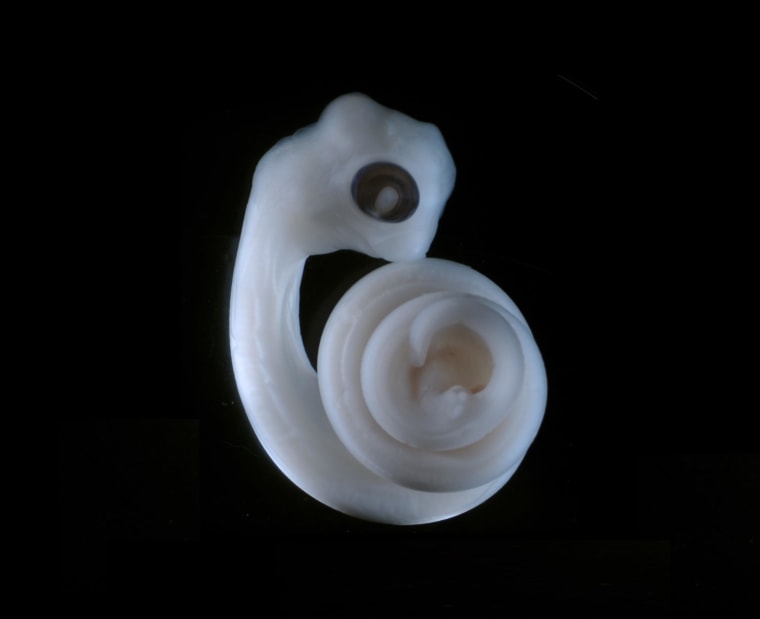If you turn over a mouse and a snake to look for their sex organs, you'd probably gain an appreciation for the diversity of genitalia in the animal world. Down near their tails, male mice have penises studded with tiny spines, and female mice have vaginas. But male snakes have a pair of penises, called hemipenes, closer to the middle of their body. During sex, they insert one into the female's all-purpose opening.
There's a good reason why you'd find the sex organs in different spots on a mouse and a snake, according to a new study. During early development, snake genitals arise from the vestigial tissue that would have given rise to their hind legs. (Snakes lost their limbs a long time ago during the course of evolution.) Meanwhile, the genital tubercle in mammals — the part that will eventually become either a penis or a clitoris — derives from the tail bud tissue.
The findings, which were published in this week's issue of Nature, shed light on how external genitals arose from these very different starting tissues for reptiles and mammals. [The 7 Weirdest Animal Penises]

"There's always been a suggestion that limbs and genitalia might have co-evolved," said Patrick Tschopp, a postdoctoral researcher at Harvard Medical School, who led the study. "When animals made the move toward dry environments, two things had to change."
First, the earliest animals to crawl onto land hundreds of millions of years ago had to evolve limbs from fins so they could get around, Tschopp told LiveScience. Second, the creatures had to find a way to protect their eggs and keep them from drying out. They were facing a much more hostile environment, and they could no longer just release eggs and sperm into the water. Nature's solution was internal fertilization — direct delivery from the male to the female, which required external genitalia.
Tschopp and colleagues decided to trace the lineage of external genitalia in mice, chickens, lizards and snakes. They did this by injecting fluorescent dye to mark the embryonic cloaca, a transient structure that eventually develops into the urinary and gut tracts. For snakes and reptiles, the cloaca is located near the hind limbs, so the genitals start developing there. For mice and birds, the cloaca is located near the tail bud, and that's where the genitals end up.
The researchers then put their findings to the test in a lab experiment. They artificially misplaced the cloaca in a chicken embryo so that it would be closer to the position of the cloaca in a snake or reptile. Accordingly, the surrounding cells started responding as if they were genitals.
"It fits into a general pattern that was known already, of very rapid and diverse evolution of genitals," said Menno Schilthuizen, a biologist at the Naturalis Biodiversity Center in the Netherlands, who was not involved in the study.
— Megan Gannon, LiveScience
This is a condensed version of a report from LiveScience. Read the full report. Follow Megan Gannon on Twitter and Google+. Follow LiveScience on Twitter, Facebook and Google+.